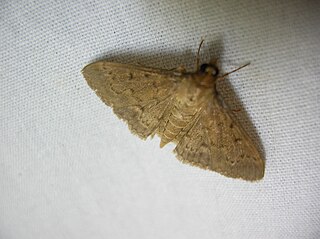
This is a list of properties and historic districts in Hawaii listed on the National Register of Historic Places. More than 340 listings appear on all but one of Hawaii's main islands and the Northwestern Islands, and in all of its five counties. Included are houses, schools, archeological sites, ships, shipwrecks and various other types of listings. These properties and districts are listed by island, beginning at the northwestern end of the chain.

The energy sector in Hawaii has rapidly adopted solar power due to the high costs of electricity, and good solar resources, and has one of the highest per capita rates of solar power in the United States. Hawaii's imported energy costs, mostly for imported petroleum and coal, are three to four times higher than the mainland, so Hawaii has motivation to become one of the highest users of solar energy. Hawaii was the first state in the United States to reach grid parity for photovoltaics. Its tropical location provides abundant ambient energy.
Eudonia ombrodes is a moth of the family Crambidae. It is endemic to the Hawaiian islands of Oahu, Molokai, Maui, Lanai and Hawaii.

Omiodes localis is a moth of the family Crambidae. It is endemic to the Hawaiian islands of Kauai, Oahu, Molokai, Maui, Lanai and Hawaii.
Udea calliastra is a moth of the family Crambidae. It is endemic to the Hawaiian islands of Maui, Kauai, Molokai, Oahu and Hawaii.
Udea despecta, the Hawaiian sweetpotato leafroller, is a moth of the family Crambidae. It is endemic to the Hawaiian islands of Kauai, Oahu, Molokai, Maui, Lanai and Hawaii.
Udea ephippias is a moth of the family Crambidae. It is endemic to the Hawaiian islands of Kauai, Oahu, Molokai and Maui.
Udea thermantis is a moth of the family Crambidae. It is endemic to the Hawaiian islands of Kauai, Oahu, Molokai, Maui and Hawaii.
Udea micacea is a moth of the family Crambidae. It is endemic to the Hawaiian islands of Kauai, Oahu, Molokai and Maui.
Udea nigrescens is a moth of the family Crambidae. It is endemic to the Hawaiian islands of Kauai, Oahu, Molokai and Maui.
Udea pyranthes is a moth of the family Crambidae. It is endemic to the Hawaiian islands of Kauai, Oahu, Molokai, Maui and Hawaii.

Mestolobes minuscula is a moth of the family Crambidae described by Arthur Gardiner Butler in 1881. It is endemic to the Hawaiian islands of Kauai, Oahu, Molokai, Maui, Lanai and Hawaii.
Eccoptocera foetorivorans is a moth of the family Tortricidae. It was first described by Arthur Gardiner Butler in 1881. It is endemic to the Hawaiian islands of Kauai, Oahu, Molokai, Maui, Lanai and Hawaii.
Bactra straminea is a moth of the family Tortricidae. It was first described by Arthur Gardiner Butler in 1881. It is only known from the Hawaiian islands of Kauai, Oahu, Molokai, Maui, Lanai and Hawaii, but might be an introduced species, although it has not been recorded from any other location.

Stenogyne is a genus of flowering plants in the mint family first described in 1830. The entire genus is endemic to Hawaii.
- Stenogyne strangulationA.Gray - narrow leaf stenography
- Stenogyne bifidaHillebr. - two cleft stenography - Molokai
- Stenogyne methodicalnessA.Gray - bog stenography - Big Island
- Stenogyne cosmicallySherff - Maui
- Stenogyne campanulataWeller & Sakai - Kala Valley stenography - Kauai
- †Stenogyne incinerateHillebr - Maui but extinct
- Stenogyne cranwelliaeSherff - Big Island
- †Stenogyne haliakalaeWawra - Maui but extinct
- Stenogyne kaalaeWawra - Oahu
- Stenogyne kamehamehaeWawra - Molokai, Maui
- Stenogyne kanehoanaO.Deg. & Sherff - Oahu stenography - Oahu
- Stenogyne kauaulaensisK.R.Wood & H.Oppenh. - Maui
- Stenogyne kealiaeWawra - Kauai
- Stenogyne macranthaBenth. - Big Island
- Stenogyne microphyllaBenth. - Maui, Big Island
- †Stenogyne oxygonaO.Deg. & Sherff - Big Island but extinct
- Stenogyne purpureaH.Mann - Kauai
- Stenogyne rotundifoliaA.Gray - pua'ainaka - Maui
- Stenogyne rugosaBenth. - ma'ohi'ohi - Maui, Big Island
- Stenogyne scrophularioidesBenth. - mohihi - Big Island
- Stenogyne sessilisBenth. - Lanai, Maui, Big Island
- †Stenogyne viridisHillebr. - Maui but extinct
Mike Spalding is a marathon swimmer, and one of only two people to have swum all nine channels of the main Hawaiian Islands. He lives on Maui. On March 16, 2009 Spalding became one of the few humans to be attacked by the deep water cookiecutter shark. He was bitten by one of the sharks while swimming between the islands of Hawai'i and Maui in what is referred to as the Alenuihaha Channel. The attack occurred at 8:15 pm 10 miles off Upolu point. The cookiecutter shark was attracted to squid that were in turn drawn to the light on the escort boat. Just before the attack the swimmer felt squid bumping into him while swimming. The cookiecutter shark first attached itself to the upper torso but did not bite as it was scared away by the swimming motion. On exiting the water into the escort kayak the second bite took a round cookiecutter chunk of flesh out of the lower left calf. Spalding completed the crossing a year and a half later without incident except for the appearance of an oceanic whitetip shark in the same vicinity of the cookiecutter shark incident.

The 2016 United States House of Representatives elections in Hawaii occurred on November 8, 2016. The electorate chose two candidates to act in the U.S. House, one from each of the state's two districts. Hawaii is one of 14 states that employ an open primary system, meaning voters do not have to state a party affiliation in the election. The primaries were held on August 13.
This page is based on this
Wikipedia article Text is available under the
CC BY-SA 4.0 license; additional terms may apply.
Images, videos and audio are available under their respective licenses.





